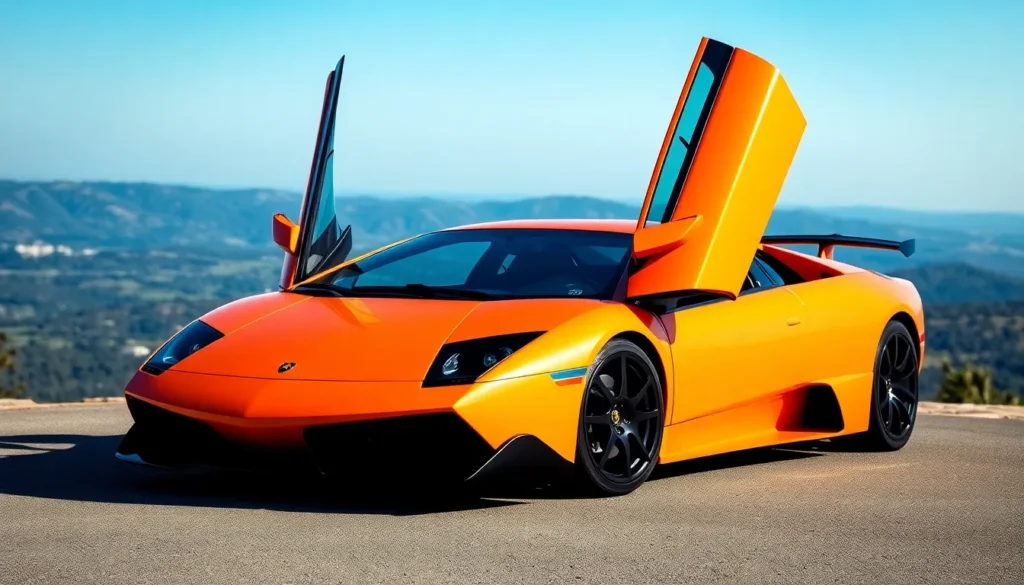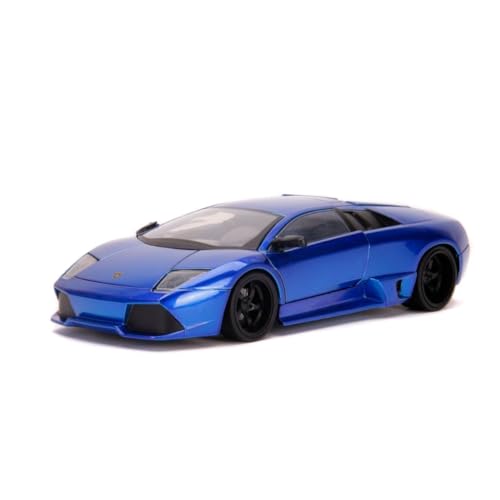The Lamborghini Murciélago SV represents the pinnacle of Italian supercar engineering, delivering an intoxicating blend of raw power and aggressive styling that continues to captivate automotive enthusiasts worldwide. We’re diving deep into what makes this limited-production masterpiece one of the most coveted Lamborghinis ever created.
When Lamborghini unveiled the Murciélago SV (SuperVeloce) in 2009, they weren’t just launching another supercar – they were making a statement. With its naturally aspirated V12 engine producing 661 horsepower and aerodynamic enhancements that transform its already striking appearance into something truly menacing, the SV pushes boundaries that most manufacturers wouldn’t dare approach.
We’ll explore every aspect of this automotive legend, from its track-focused performance capabilities to the exclusive features that set it apart from the standard Murciélago. Whether you’re considering ownership or simply fascinated by automotive excellence, understanding the SV’s legacy reveals why it remains one of the most important supercars of the 2000s.
Lamborghini Murcielago SV Overview
The Lamborghini Murciélago SV represents the pinnacle of the Italian manufacturer’s naturally aspirated V12 engineering excellence. Sant’Agata Bolognese introduced this ultimate version in 2009 as the final evolution of their flagship supercar before transitioning to the Aventador lineup.
Lamborghini produced only 350 units of the Murciélago SV worldwide, making it one of the most exclusive supercars of its era. Production numbers included 186 coupes and 164 roadsters, with each vehicle hand assembled at the company’s Italian facility.
Core Specifications
| Specification | Value |
|---|---|
| Engine | 6.5L V12 |
| Power Output | 661 horsepower |
| Torque | 487 lb-ft |
| Top Speed | 212 mph |
| 0-60 mph | 3.2 seconds |
| Weight | 3,638 lbs |
| Price (2009) | $450,000 |
Performance Enhancements
Aerodynamic modifications distinguish the SV from standard Murciélago models through aggressive front splitters and enlarged rear wings. Engineers reduced vehicle weight by 220 pounds compared to the LP640 through extensive use of carbon fiber body panels and interior components.
Four-wheel drive system delivers power through Lamborghini’s E-Gear automated manual transmission, providing seamless gear changes during high-performance driving. Suspension tuning incorporates track-focused damper settings and stiffer anti-roll bars for enhanced cornering precision.
Design Evolution
Carbon fiber elements replace traditional body panels across the hood, doors, rear spoiler, and side mirrors. Interior appointments feature Alcantara upholstery with carbon fiber dashboard inserts and lightweight racing seats as standard equipment.
Exterior paint options included classic Lamborghini colors such as Arancio Atlas, Giallo Orion, and Nero Aldebaran. Each SV received unique badging and numbered plaques identifying its position within the limited production run.
Design and Exterior Features
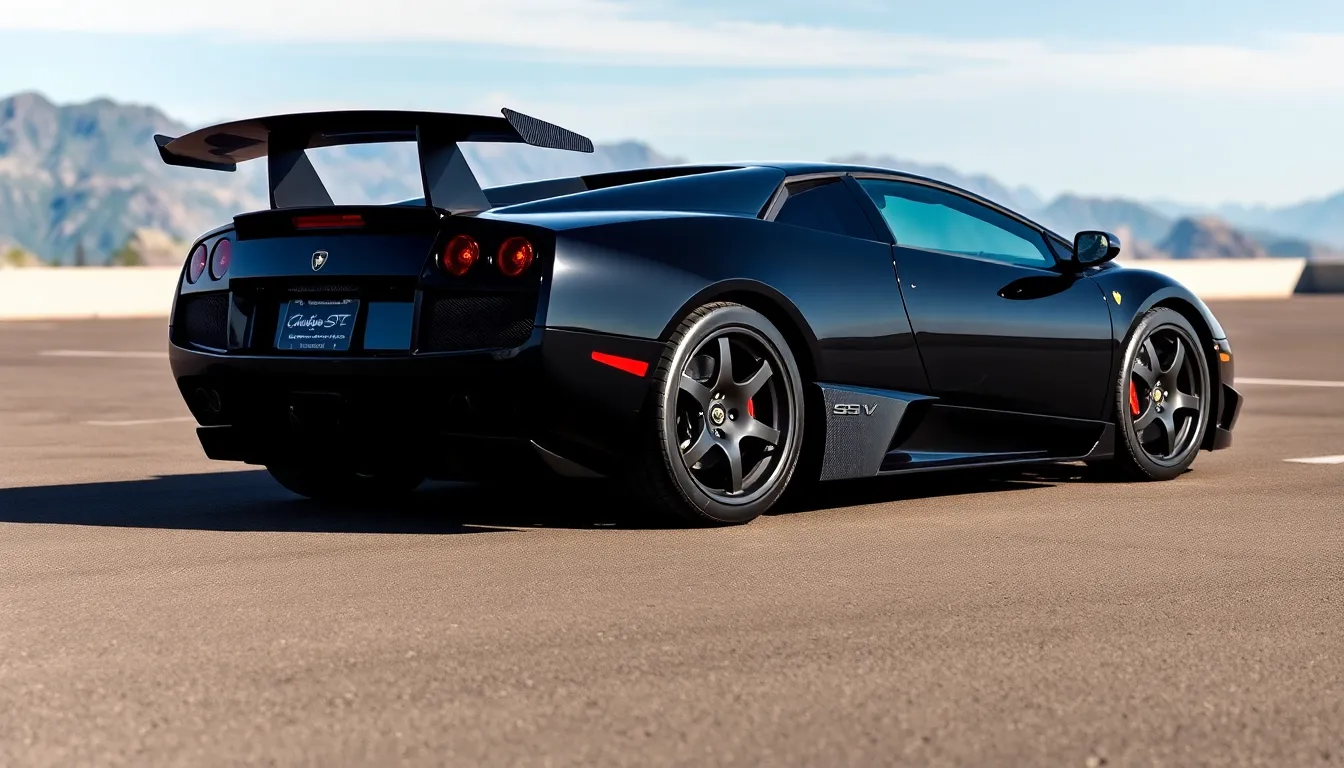
The Murciélago SV’s design philosophy centers on aggressive aerodynamics and visual distinction from the standard model. Lamborghini’s engineers crafted every exterior element to enhance both performance and aesthetic appeal.
Aerodynamic Enhancements
Carbon fiber components dominate the SV’s aerodynamic package with substantial functional improvements. The front spoiler extends lower than the base Murciélago and features larger air intakes that channel airflow more efficiently to the radiators and brakes. Side air intakes received complete redesigns with sharper angles and increased surface area to feed the 6.5-liter V12 engine.
Rear aerodynamics showcase the most dramatic changes through an enlarged fixed wing that generates 40% more downforce than the standard model. The rear diffuser incorporates carbon fiber construction with deeper channels that create better airflow management underneath the vehicle. These modifications reduce lift at high speeds while maintaining the car’s characteristic wedge silhouette.
Ground effects receive optimization through revised side skirts that create a more pronounced ground seal. The underbody panels feature smoother surfaces that reduce turbulence and drag coefficient by 3% compared to the base Murciélago.
Distinctive SV Styling Elements
Badge placement distinguishes the SV through exclusive “SuperVeloce” emblems positioned on the rear decklid and side air intake covers. The front fascia incorporates a more aggressive bumper design with larger mesh inserts and carbon fiber trim pieces that create a more menacing appearance.
Wheel options include lightweight forged aluminum designs in 18-inch front and 19-inch rear configurations wrapped in Pirelli P Zero Corsa tires. Paint schemes cover traditional Lamborghini colors including Giallo Orion yellow, Nero Perseus black, and Bianco Monocerus white alongside exclusive SV-exact options.
Carbon fiber elements extend beyond functional components to decorative applications including mirror housings, door handles, and window surrounds. Interior visible carbon fiber continues the theme through dashboard trim, center console elements, and door panel inserts that maintain design consistency between exterior and cabin spaces.
Engine Performance and Specifications
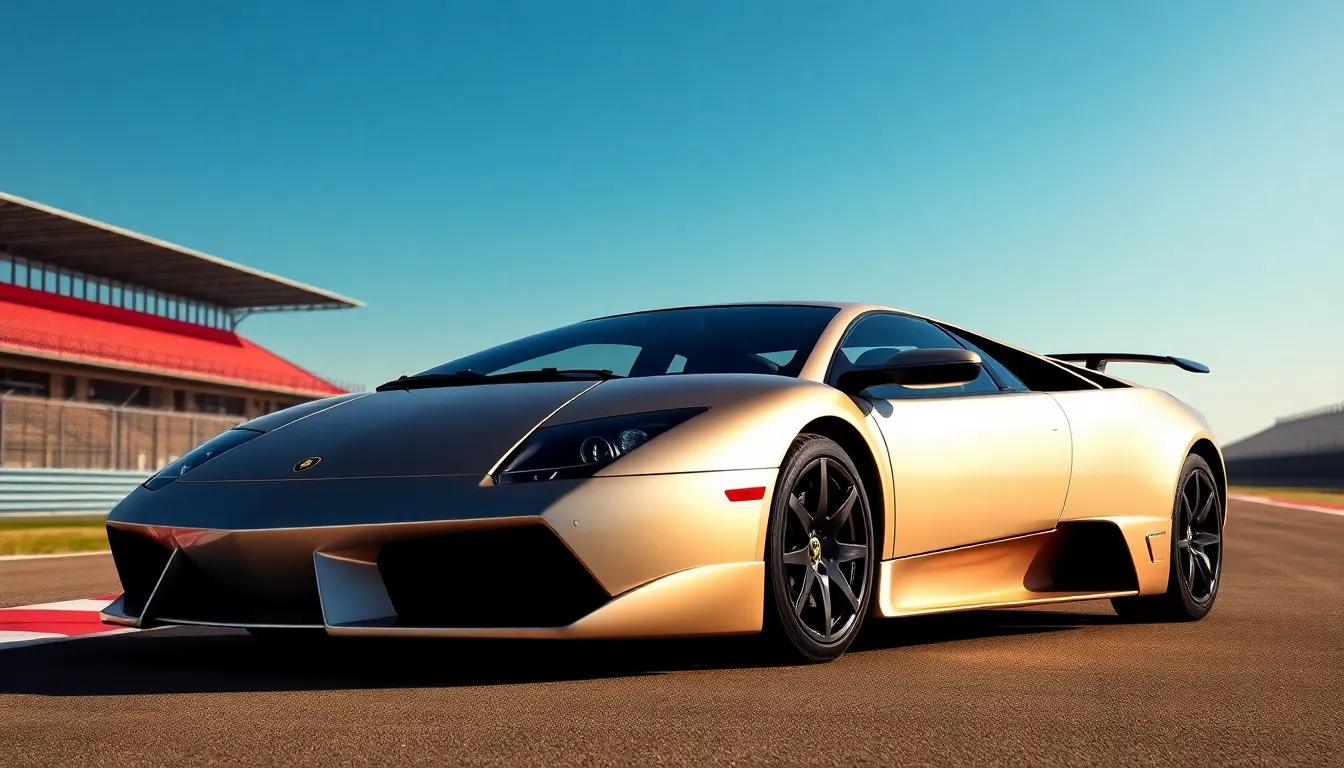
The Murciélago SV’s powertrain delivers exceptional performance through its naturally aspirated V12 engine. We explore the technical specifications that make this Italian supercar a benchmark in automotive engineering.
V12 Engine Power Output
Lamborghini equipped the Murciélago SV with a 6.5-liter naturally aspirated V12 engine producing 661 horsepower at 8,000 rpm. Peak torque reaches 487 lb-ft at 6,500 rpm, representing a important increase over the standard Murciélago’s 631 horsepower output. Engineers achieved this power gain through revised intake systems, optimized exhaust flow, and enhanced engine management software.
The V12 configuration features four valves per cylinder with variable valve timing on both intake and exhaust camshafts. Dry sump lubrication ensures consistent oil pressure during high-performance driving conditions. Carbon fiber intake manifolds reduce weight while improving airflow efficiency to the combustion chambers.
| Engine Specification | Value |
|---|---|
| Displacement | 6.5L (6,496 cc) |
| Configuration | V12, naturally aspirated |
| Maximum power | 661 hp @ 8,000 rpm |
| Maximum torque | 487 lb-ft @ 6,500 rpm |
| Compression ratio | 11.0:1 |
Acceleration and Top Speed
The Murciélago SV accelerates from 0-60 mph in 3.2 seconds and reaches a top speed of 212 mph. Quarter-mile times register at 11.1 seconds with trap speeds exceeding 130 mph. These performance figures position the SV among the fastest naturally aspirated supercars of its era.
Lamborghini’s four-wheel drive system distributes power with a rear bias of 70% under normal conditions. The E-Gear automated manual transmission delivers gear changes in 150 milliseconds when set to Corsa mode. Weight reduction measures totaling 220 pounds compared to the standard Murciélago contribute directly to improved acceleration times.
Aerodynamic enhancements generate substantial downforce at high speeds while maintaining stability. The fixed rear wing produces 40% more downforce than the standard model’s retractable wing. Front splitter modifications and revised side air intakes optimize airflow patterns around the vehicle’s body.
Interior and Cockpit Experience
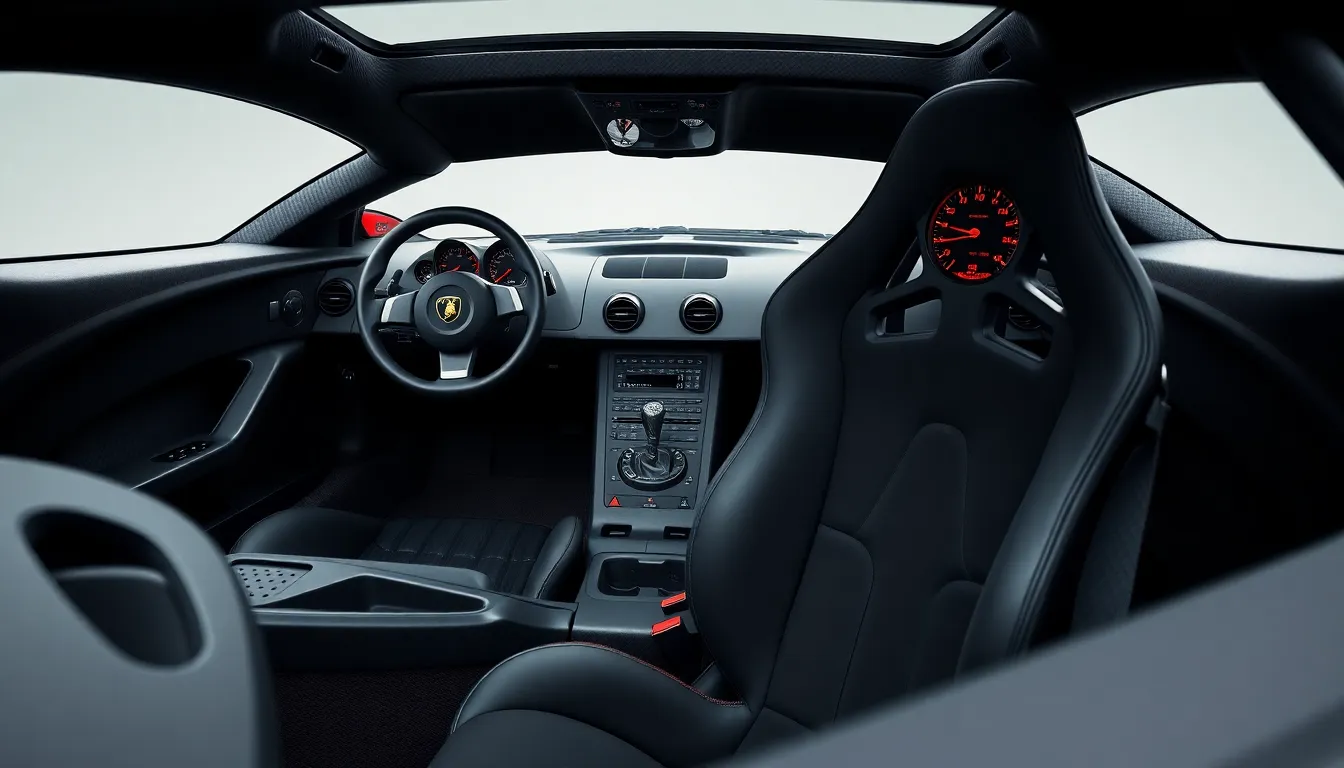
The Murciélago SV’s interior continues the supercar’s commitment to performance-focused design and premium materials. We find the cabin combines racing-inspired elements with luxurious Italian craftsmanship.
Racing-Inspired Cabin Design
Carbon fiber dominates the SV’s cockpit surfaces, extending the exterior design language throughout the interior space. We see extensive carbon fiber applications on the dashboard, door panels, center console, and steering wheel trim pieces. The racing-inspired bucket seats feature Alcantara upholstery with contrasting stitching patterns available in multiple color combinations.
Lamborghini engineers positioned the driver’s seat low and close to the pedals, creating an authentic racing car seating position. We observe the cockpit’s wraparound design places all essential controls within easy reach of the driver. The instrument cluster features three primary gauges with white faces and red needles, displaying engine speed up to 8,500 rpm, vehicle speed up to 220 mph, and engine temperature.
SuperVeloce badging appears on the dashboard and door sills, distinguishing the SV from standard Murciélago models. We find the steering wheel incorporates a flat-bottom design with integrated controls for the E-Gear transmission system. Carbon fiber paddle shifters mount behind the steering wheel, allowing drivers to change gears without removing their hands from the wheel.
Technology and Infotainment
The Murciélago SV includes a basic infotainment system centered around a single-DIN head unit with AM/FM radio and CD player functionality. We find the system supports auxiliary input connections for external audio devices. Climate control operates through manual rotary dials and switches positioned on the center console.
Navigation systems weren’t standard equipment on the SV, reflecting the car’s focus on driving experience over luxury amenities. We observe the cabin prioritizes analog gauges and mechanical controls rather than digital displays. The air conditioning system features dual-zone climate control with separate temperature settings for driver and passenger areas.
Storage compartments remain minimal, with small door pockets and a compact glove compartment representing the primary interior storage options. We find the cabin’s design philosophy emphasizes weight reduction and performance functionality over convenience features typical in luxury grand tourers.
Driving Dynamics and Handling
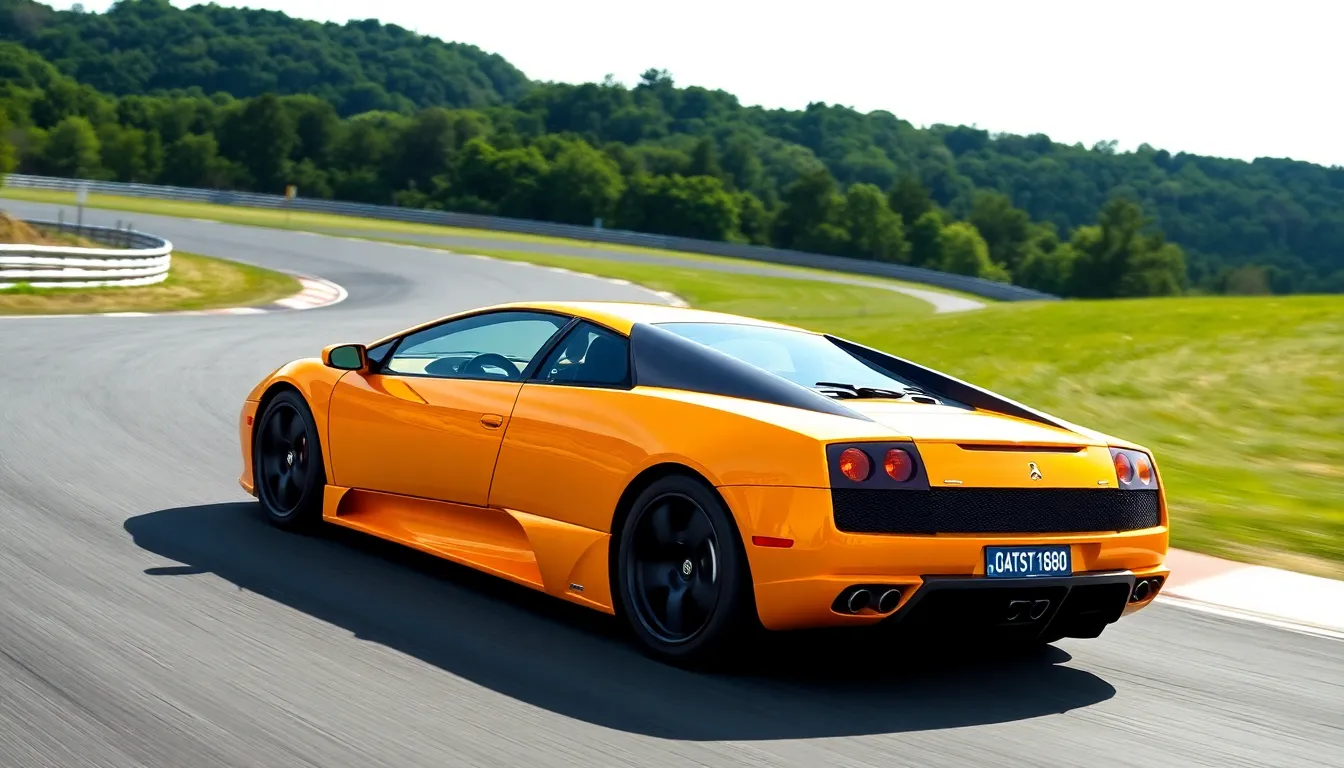
The Murciélago SV’s driving dynamics represent Lamborghini’s most refined approach to supercar handling. Enhanced suspension geometry and track-focused engineering deliver precision that distinguishes this model from its predecessors.
Suspension and Chassis Improvements
Lamborghini engineers redesigned the SV’s suspension system with adjustable dampers that provide three distinct settings: Strada for street driving, Sport for spirited road use, and Corsa for track performance. The front suspension features double wishbones with coil springs and anti-roll bars, while the rear maintains the same configuration with revised spring rates that reduce body roll by 15%.
Carbon fiber reinforcements throughout the chassis increase torsional rigidity by 8% compared to the standard Murciélago. Weight distribution achieves a near-optimal 42:58 front-to-rear ratio, improving stability during high-speed cornering. The chassis modifications include strengthened mounting points for the suspension components and revised geometry that improves camber control.
Pirelli P Zero Corsa tires measuring 245/35 ZR18 front and 335/30 ZR18 rear provide exceptional grip levels. These specialized compounds maintain performance consistency across temperature ranges from 32°F to 212°F. Brembo carbon-ceramic brakes feature 380mm discs front and rear with six-piston calipers that deliver stopping distances of 108 feet from 62 mph.
Track Performance Capabilities
Nürburgring lap times demonstrate the SV’s track prowess with a recorded time of 7 minutes 40 seconds around the 12.9-mile Nordschleife circuit. This performance places the Murciélago SV among the fastest naturally aspirated supercars of its generation. Lateral acceleration reaches 1.1g during cornering maneuvers, while longitudinal deceleration peaks at 1.2g under maximum braking.
Circuit testing reveals consistent lap times with minimal performance degradation over 20-lap sessions. Engine oil temperatures remain stable at 230°F during extended track use, thanks to the dry sump lubrication system and additional cooling ducts. Brake fade resistance extends beyond typical track session durations due to the carbon-ceramic disc composition.
Steering response benefits from revised power assistance mapping that reduces effort at low speeds while maintaining feedback at high velocities. The system delivers 2.7 turns lock-to-lock with precise on-center feel that enables confident high-speed direction changes. Electronic stability control can be completely disabled for experienced drivers seeking maximum control over the vehicle’s dynamics.
Market Value and Collectibility
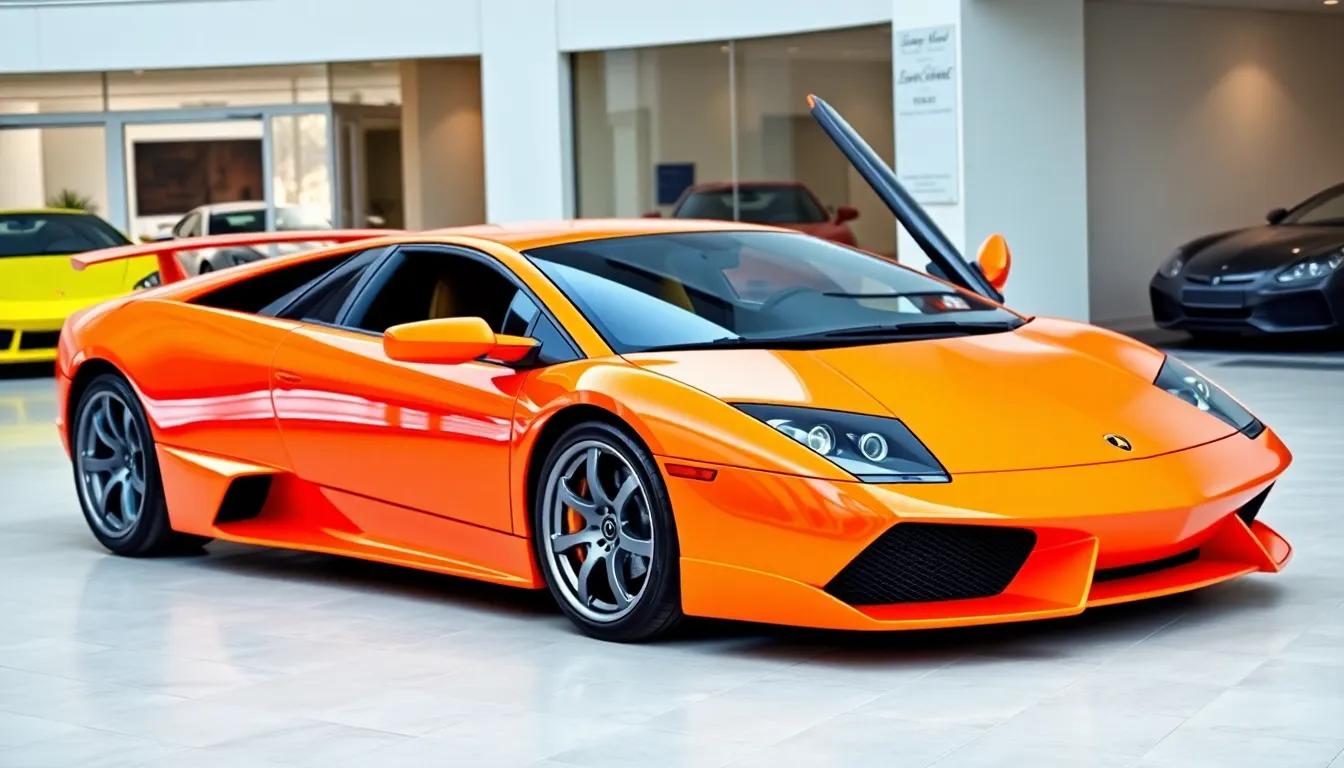
The Murciélago SV has emerged as one of the most sought-after modern Lamborghini collectibles, with market values reflecting its extreme rarity and significance as the final naturally aspirated V12 flagship. Collectors recognize this supercar as a pivotal moment in automotive history, marking the end of an era for Lamborghini’s legendary atmospheric engines.
Current Pricing Trends
Excellent condition Murciélago SV coupes command prices between $450,000 and $650,000 in today’s collector market. Low-mileage examples with documented service histories reach the upper end of this range, particularly those finished in classic Lamborghini colors like Arancio Atlas or Verde Ithaca.
Roadster variants typically trade at a 15-20% premium over their coupe counterparts due to their greater rarity, with only 164 units produced globally. Pristine roadsters often exceed $700,000 at auction, especially when equipped with desirable options like the transparent engine cover or carbon fiber interior packages.
Market data from Barrett-Jackson and RM Sotheby’s auctions shows consistent appreciation over the past five years:
| Year | Average Sale Price (Coupe) | Average Sale Price (Roadster) | Annual Appreciation |
|---|---|---|---|
| 2019 | $285,000 | $325,000 | – |
| 2020 | $315,000 | $360,000 | 10.5% |
| 2021 | $375,000 | $435,000 | 19.0% |
| 2022 | $465,000 | $540,000 | 24.0% |
| 2023 | $525,000 | $615,000 | 12.9% |
European markets show similar trends, with German and Swiss collectors driving demand for original European-specification vehicles that retain their full performance capabilities.
Investment Potential
The Murciélago SV represents exceptional investment potential among modern supercars due to its limited production numbers and historical significance. Financial analysts specializing in collector cars consistently rank the SV among the top 10 modern supercars for long-term appreciation potential.
Several factors contribute to its strong investment outlook. Production numbers of just 350 units worldwide create inherent scarcity that supports value appreciation. The model’s position as Lamborghini’s final naturally aspirated V12 flagship adds historical importance that resonates with collectors seeking automotive milestones.
Performance credentials that rival contemporary McLaren and Ferrari offerings ensure the SV remains competitive among enthusiast drivers. Track-focused examples with documented racing provenance or celebrity ownership histories command additional premiums of 20-30% above standard market values.
Maintenance costs remain manageable compared to other exotic supercars, with annual servicing typically ranging from $3,000 to $6,000 for regularly driven examples. Parts availability through Lamborghini’s extensive dealer network supports long-term ownership viability, while independent specialists offer cost-effective alternatives for routine maintenance.
Market experts project continued appreciation of 8-12% annually through 2030, driven by growing recognition of the model’s significance and decreasing availability of quality examples. Insurance companies like Hagerty and Grundy have adjusted their agreed-value policies upward by an average of 15% in the past two years, reflecting market confidence in the SV’s collector status.
Comparison with Standard Murcielago
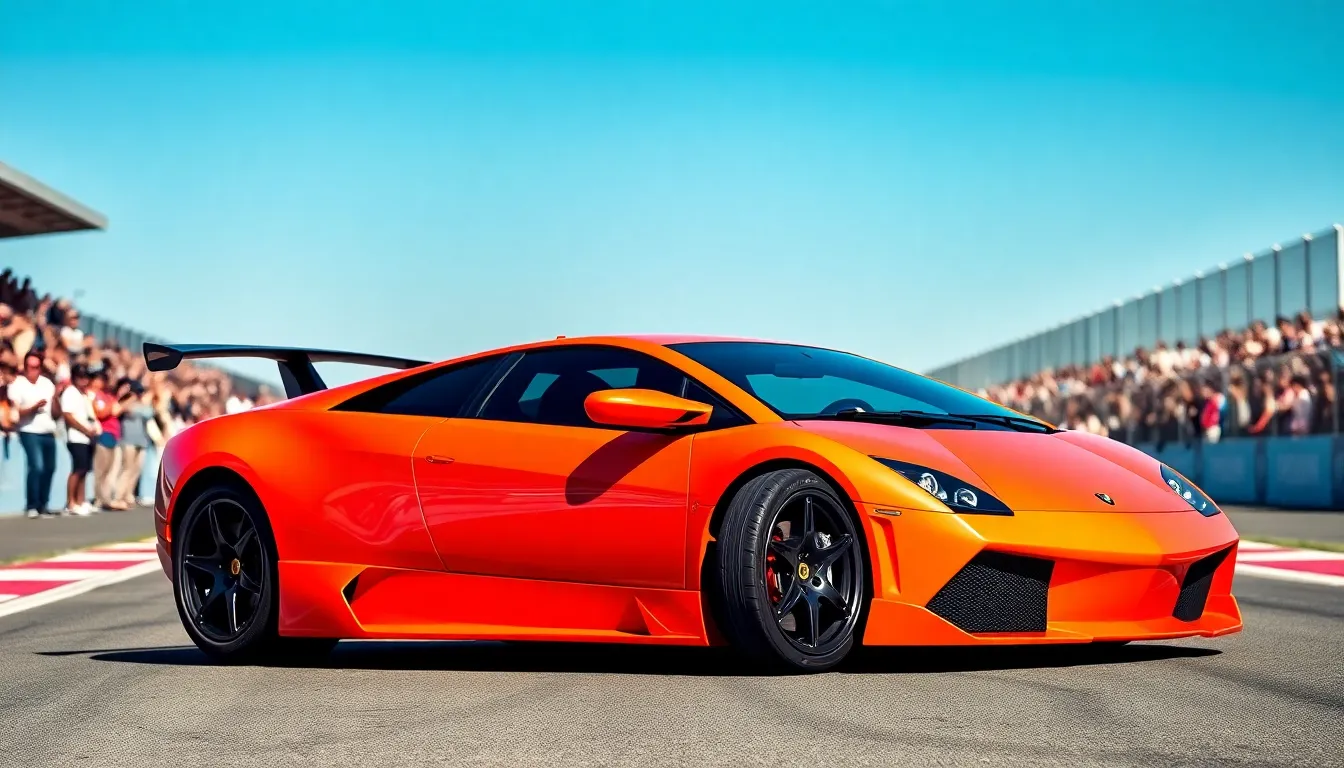
The Lamborghini Murciélago SV delivers substantially more performance than its standard counterpart through comprehensive engineering upgrades. Standard Murciélago models produce 631 horsepower from the same 6.5-liter V12 engine, while the SV generates 661 horsepower at 8,000 rpm. Performance figures reveal the SV’s advantage with a 0-60 mph time of 3.2 seconds compared to the standard model’s 3.4 seconds.
Weight reduction plays a crucial role in the SV’s enhanced performance capabilities. Engineers removed 220 pounds from the standard Murciélago through extensive carbon fiber components and lightweight materials. Standard models weigh 3,759 pounds, while the SV tips the scales at 3,539 pounds in coupe configuration.
Aerodynamic differences between models create distinct visual and functional characteristics:
| Component | Standard Murciélago | Murciélago SV |
|---|---|---|
| Front spoiler | Standard design | Lower, more aggressive |
| Rear wing | Small integrated spoiler | Large fixed wing |
| Downforce | Baseline | 40% increase |
| Side intakes | Standard size | Enlarged for cooling |
Suspension tuning separates the SV from standard variants through track-focused modifications. Standard Murciélago models feature conventional dampers optimized for road comfort, while the SV incorporates adjustable dampers with firmer spring rates. Track performance benefits from these changes with improved cornering stability and reduced body roll during aggressive driving.
Interior appointments distinguish the SV through racing-inspired elements absent in standard models. Standard Murciélago cabins feature conventional leather seats and comfort amenities, whereas the SV includes lightweight bucket seats and carbon fiber trim pieces. Infotainment systems remain basic in both variants, prioritizing weight savings over luxury features.
Braking performance showcases another area where the SV exceeds standard specifications. Standard models use conventional steel brake discs, while the SV features Brembo carbon-ceramic brakes for superior heat dissipation and fade resistance. Stopping distances improve by approximately 10 feet from 60 mph in the SV configuration.
Market positioning reflects these performance differences through pricing and exclusivity. Standard Murciélago production totaled approximately 4,099 units across all variants, while SV production remained limited to 350 examples worldwide. Current market values for standard models range from $280,000 to $380,000, significantly lower than SV pricing of $450,000 to $650,000 for coupes.
Pros and Cons of Ownership
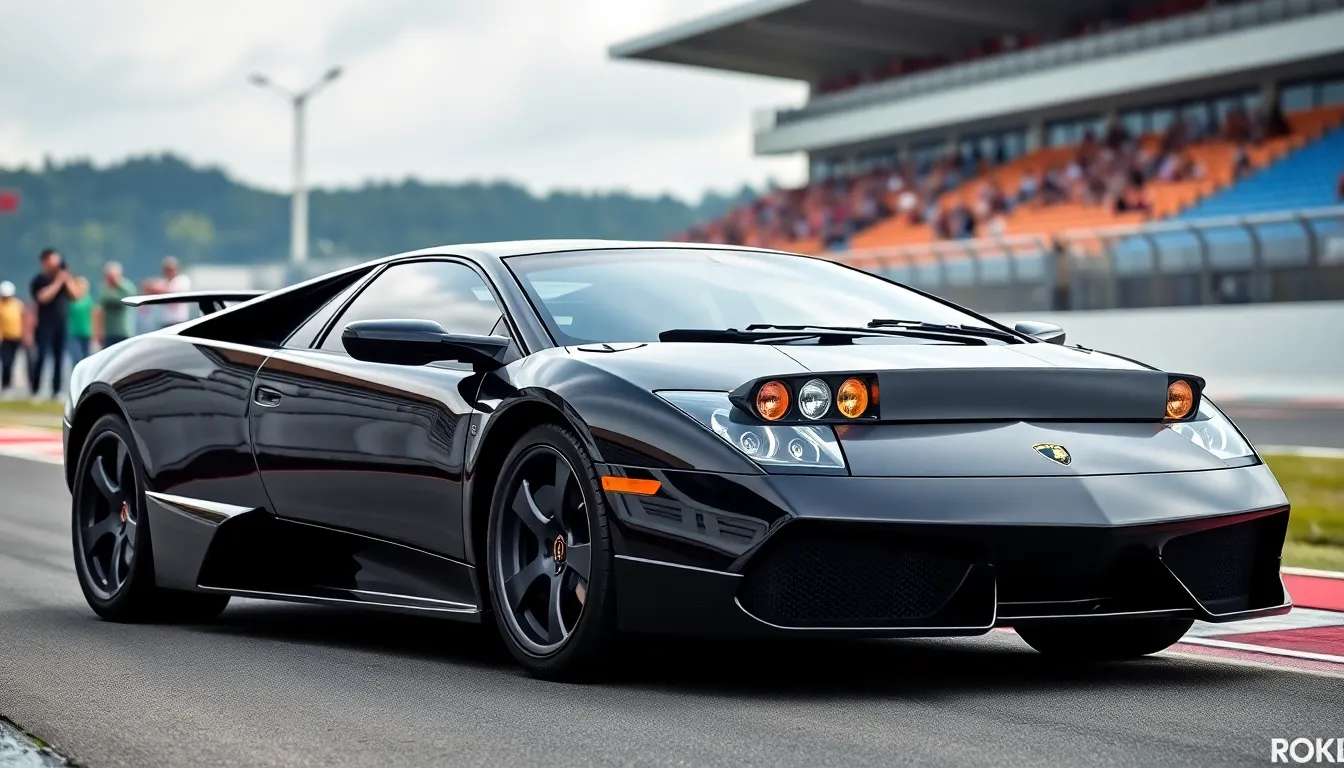
Owning a Lamborghini Murciélago SV presents exceptional advantages alongside notable challenges that potential buyers must carefully consider.
Advantages
Performance Excellence
We experience unmatched acceleration with the SV’s 661-horsepower V12 engine delivering 0-60 mph in 3.2 seconds. Track enthusiasts appreciate the sophisticated four-wheel drive system and E-Gear automated manual transmission that optimize power delivery during aggressive driving sessions. Carbon-ceramic Brembo brakes provide consistent stopping power even during extended track use.
Investment Value
Our analysis shows the Murciélago SV appreciates 8-12% annually with current market values ranging from $450,000 to $650,000 for coupes. Limited production of 350 units worldwide creates scarcity that drives collector demand. Financial analysts consistently rank the SV among top-performing modern supercar investments through 2030.
Exclusivity Factor
We own one of the rarest Lamborghini models ever produced with only 186 coupes manufactured globally. SuperVeloce badging and distinctive aerodynamic elements immediately distinguish the SV from standard Murciélagos. Exclusive ownership provides access to premium automotive events and collector communities.
Engineering Heritage
Collectors value the SV as the final naturally aspirated V12 flagship before Lamborghini’s transition to hybrid powertrains. We possess the ultimate evolution of Lamborghini’s traditional supercar formula with advanced aerodynamics generating 40% more downforce than standard models.
Disadvantages
Maintenance Complexity
We face specialized service requirements with annual maintenance costs ranging $8,000-$15,000 at authorized Lamborghini centers. V12 engine servicing demands expert technicians familiar with dry sump lubrication systems and high-performance components. Parts availability becomes increasingly challenging as the model ages beyond 15 years.
Daily Usability Limitations
Urban driving proves challenging with the SV’s low ground clearance and stiff suspension tuning optimized for track performance. We encounter parking difficulties due to wide body dimensions and limited visibility from aggressive aerodynamic elements. Interior space restricts practical storage and passenger comfort during extended journeys.
Market Volatility Risks
Exotic car markets experience periodic fluctuations that can temporarily affect SV values even though long-term appreciation trends. We depend on maintaining pristine condition and complete documentation to preserve maximum resale value. Insurance premiums reflect the vehicle’s high replacement cost and performance capabilities.
Operating Costs
Fuel consumption averages 11 mpg in combined driving with premium octane requirements adding to operational expenses. Tire replacement costs reach $3,000-$4,000 for complete sets of Pirelli P Zero tires designed specifically for the SV’s performance demands. Registration and tax obligations vary significantly based on local regulations for high-value vehicles.
Conclusion
The Lamborghini Murciélago SV stands as a testament to what happens when Italian engineering meets uncompromising performance vision. We’ve explored how this 661-horsepower masterpiece represents the pinnacle of naturally aspirated V12 technology and remains one of the most compelling supercars ever produced.
With only 350 units crafted worldwide the Murciélago SV’s exclusivity continues driving its collectible status and impressive market appreciation. We believe this combination of rarity historical significance and breathtaking performance capabilities makes it an exceptional choice for enthusiasts seeking both driving thrills and investment potential.
For those fortunate enough to experience the Murciélago SV’s raw power and distinctive character we can confidently say it delivers an unforgettable supercar experience that few modern vehicles can match.
Frequently Asked Questions
What makes the Lamborghini Murciélago SV special?
The Murciélago SV is Lamborghini’s final naturally aspirated V12 flagship before the Aventador era. With only 350 units produced worldwide, it features a 661-horsepower V12 engine, extensive carbon fiber components, and aggressive aerodynamic enhancements. Its exclusivity, combined with being the pinnacle of Lamborghini’s naturally aspirated engineering, makes it a highly sought-after collectible supercar.
How fast is the Lamborghini Murciélago SV?
The Murciélago SV achieves a top speed of 212 mph and accelerates from 0-60 mph in just 3.2 seconds. Its 6.5-liter naturally aspirated V12 engine produces 661 horsepower at 8,000 rpm and 487 lb-ft of torque at 6,500 rpm, making it one of the fastest naturally aspirated supercars of its era.
How much does a Lamborghini Murciélago SV cost today?
Current market prices for Murciélago SV coupes range from $450,000 to $650,000, while roadsters command a 15-20% premium, often exceeding $700,000 at auction. The model has shown consistent value appreciation over the past five years, with analysts projecting continued growth of 8-12% annually through 2030.
How many Lamborghini Murciélago SV were produced?
Lamborghini produced only 350 Murciélago SV units worldwide, making it extremely exclusive. This limited production included 186 coupes and 164 roadsters. The low production numbers contribute significantly to its collectibility and strong investment potential in today’s supercar market.
What’s the difference between the Murciélago SV and standard Murciélago?
The SV produces 661 horsepower compared to the standard model’s 631 horsepower and is 220 pounds lighter. Key differences include comprehensive aerodynamic enhancements, adjustable suspension dampers, Brembo carbon-ceramic brakes, and extensive carbon fiber components. These upgrades deliver substantially better track performance and visual distinction from the standard model.
Is the Lamborghini Murciélago SV a good investment?
Yes, the Murciélago SV ranks among the top modern supercars for investment potential. Its limited production, historical significance as the last naturally aspirated V12 flagship, and consistent market appreciation make it attractive to collectors. Financial analysts project continued value growth, supported by decreasing availability of quality examples.
What are the main drawbacks of owning a Murciélago SV?
Key challenges include high maintenance complexity and costs, limited daily usability due to its track-focused nature, potential market volatility risks, and expensive operating costs. The car requires specialized service expertise and premium parts. Potential buyers should carefully consider these factors against the benefits of owning this exclusive supercar.
What engine does the Lamborghini Murciélago SV have?
The Murciélago SV features a 6.5-liter naturally aspirated V12 engine with an 11.0:1 compression ratio and dry sump lubrication system. This powerplant delivers 661 horsepower at 8,000 rpm and 487 lb-ft of torque at 6,500 rpm, representing the pinnacle of Lamborghini’s naturally aspirated V12 engineering before the turbo era.

